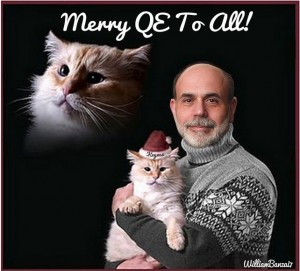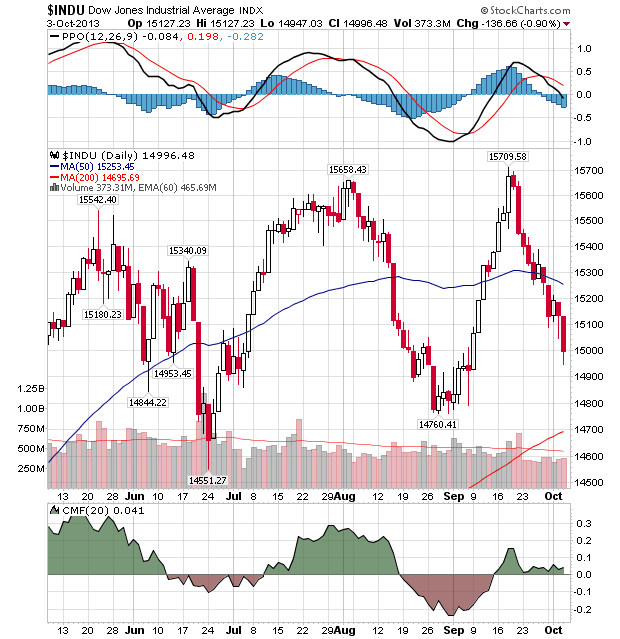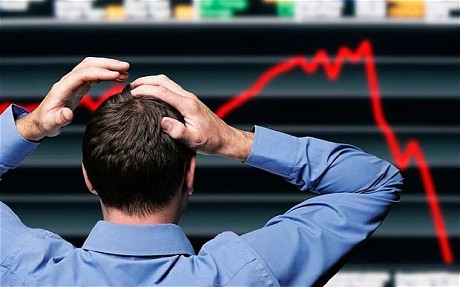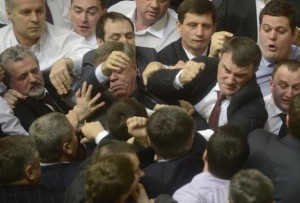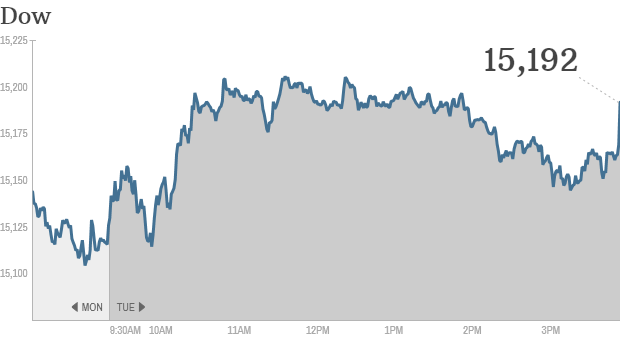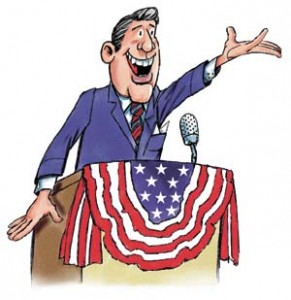Business Week Writes: Investors are buying high, yet again.

Sell low, buy high. Wash, rinse, repeat.
Investors have indulged that predilection time and again—most recently piling into the stock market just ahead of collapses in 2008 and 2001. Now it seems as if everyone again wants in big, even as the Standard & Poor’s 500-stock index has rallied 150 percent from its lows, corporate profits and cash hoards are at records, and the Federal Reserve has expanded its balance sheet to nearly $4 trillion. Equity funds drew $26 billion in the week ended September 18, breaking the previous record set six years ago, according to EPFR Global, which tracks investor flows. Domestic stock funds notably took in just under $17 billion of that total.
FED balance sheet at $4 Trillion is downright scary. This is how market tops are set.
And with such timing: U.S. shares hit record highs on Wednesday, the last day of EPFR’s reporting period, after the Fed said it would hold off from tapering its bond purchases. The market is up 20 percent this year and has jumped by a third just since last summer, having gone without a correction since 2011. The tech-laden Nasdaq is up 25 percent in 2013, visiting highs unseen since the starry-eyed turn of the century.
In a show of “you buy/we sell,” companies are racing to go public (Chrysler, anyone?). At least 200 firms are gearing to have their IPOs this year, the most since 2007. Meanwhile, in the interest of full and fair disclosure, buyout shops might want to rebrand as sellout shops, so eager have they been to cash out.
If history teaches us anything, this is a clear indication that the market is close to a top. Insiders realize that the market is overpriced and are trying to cash out.
Similarly, some legendary pros say they are in no rush to join the recent buying stampede. “Stocks were very cheap five years ago, ridiculously cheap,” Warren Buffett last week said. “That’s been corrected . . . . We’re having a hard time finding things to buy.”
I confirm this. Everything is too expensive. I cannot find anything to buy outside of a few special situations (here and there) and technically driven plays.
“Right now,” remarked Carl Icahn, “the market is giving you a false picture. The market tells you that you are doing well, but I don’t think a lot of companies are doing that well. They are taking advantage of very low interest rates. So, obviously, you don’t have to be a financial genius to understand if I can borrow at 3 percent or 4 percent and buy assets maybe my own stock that is yielding 9 percent, 10 percent, or 11 percent, I am going to make a lot of money. In one sense or another that is what is going on . . . I do think at [the market’s price-to-earnings ratio] of 17 that you have to be pretty well hedged.”
Bingo Mr. Icahn. That is exactly what is going on. Everyone is playing this stupid carry trade financial shell game. As of right now the music is still playing, the question is….when will it stop. I assure you there won’t be enough chairs.
“If you tell me quantitative easing is going to be removed over nine or 12 months,”said Stanley Druckenmiller, “that’s a big deal because it’s my belief that QE has subsidized all asset prices. And you remove that subsidization, the market will go down . . . The minute you have this phony buying stop, [stocks] can go down on no volume and just reprice immediately.”
Exactly. The only thing that is keeping this markets up, artificially I might add, in an insane amount of credit infusion through QE and low interest rates. When it stops, most asset classes WILL collapse. The only thing I would disagree with is the fact that the FED has control. The FED has only “perceived” control and the market might take that away at any moment.
In the meantime, keep your eyes on the tidy sum of $1.4 trillion. That’s how much investors have crammed into bond funds between the January 2009 and May 2013, according to Bank of America Merrill Lynch. In the just the past four months, however, they have unwound $173 billion from that mega-trade—an enormous redemption but still just a sliver of $1.4 trillion.
How much of that unwind makes its way to equities, especially when the Fed’s taper starts in earnest? For the market—loved once again, after so long—it’s a question that could trump all others.
At least for now, the paper shuffling game continues. However, be careful here. We are at the 12th inning of the bull run that has started in March of 2009. The bear market should resume soon.
Did you enjoy this article? If so, please share our blog with your friends as we try to get traction. Gratitude!!!

